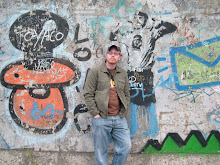My rating: 4 of 5 stars
What's fun about Gustave Doré's London pictures is that they are a great historical document of London life and they also often serve as a nice commentary on the quality of life in London at this time. Doré was really fascinated by London, and it is apparent that he is interested in both the positive and negative aspects of the city. But while his images might includes a wide range of topics and personalities, it seems that Doré was most often drawn to the poor and working-class, and many of his images captures with striking potency the reality and plight of the lower-class.
I guess some contemporaries of Doré were bugged that Doré had so many pictures of the darker side of London - the poor, the homeless, the working and living conditions for London's lower-class. Maybe these dissenters were also bugged by the fact that it's these pictures of London's dark side that really stand out. The sections on London's more prosperous citizens and their leisure and social activities (like "The Race", "The Derby" and "London on the Downs") feel a bit weak and weren't that engaging to me. But Doré also knows how to laugh at those upper-class citizens, too. Picture 105 of the Monkey House in Zoological Garden is a pretty amusing jab at those proper ladies pressed to the cage wire looking at the monkeys. The ladies look more caged than the monkeys do and I wonder who Doré thought was the bigger ape of the two groups.
I also love that the final two images of the collection are "The Angel and the Orphan" and "Infant Hospital Patients." Both images recall the injustices and sorrows attached to children, because of the social and cultural practices of the times. Children were too often severely exploited and abused, and I like that this collection ends with the children in mind. "The Angel and the Orphan" shows the angel cradling an orphan child while knocking on a door. The image recalls Christ's words in Matthew 25:35, where he states "I was a stranger and ye took me in." Christ explains this statement in verse 40 to mean that "Inasmuch as ye have done it unto one of the least of these my brethren, ye have done it unto me." Thus, for a Christian community like London (or Doré's France), it is ones Christian obligation to care for and love ones neighbor. "The Angel and the Orphan" wraps up this nice collection by reminding a predominantly Christian population of their Christian obligation to their neighbors, and "Infant Hospital Patients" I think suggests that more can be done to "lift up the hands which hang down" (Heb 12:12). This was probably was not the message London's bourgeois culture wanted to hear. No wonder some people were bugged.
View all my reviews
Some images:
 |
| "Zoological Garden - The Monkey House" |
 |
| "A Flower Girl" |
 | |
| "The Angel and the Orphan" |
 |
| "Father Thames" |

2 comments:
I'm gonna have to look up Gustave Dore because I really don't know all that much about him.
I mostly just know his art, with a dash of biographical info. But I do love his work.
Post a Comment